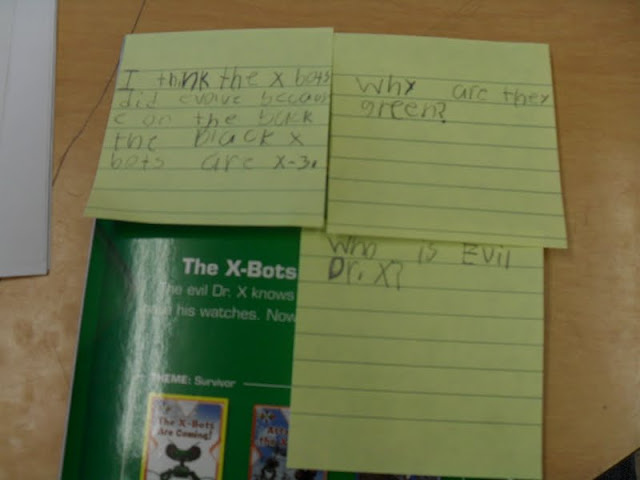In Kvitka's literacy program, she has set aside time for guided reading in the morning, for 20-25 minutes, when her schedule allows it. During this time, students work at different work stations and one group meets with her in a guided reading session. This structure first thing in the morning allows her students to transition to their station and begin working right away at their task. While she meets with a group, the other students know what is expected of them as the work reinforces literacy skills already taught.
Kvitka's four work stations are: computers, reinforcing word processing/keyboarding skills; penmanship, allowing for students to practise writing; buddy reading, where students read quietly together, sharing their thoughts and ideas; making words, reinforcing word study skills.


Computers: Kvitka uses different programs to reinforce literacy skills. Here, she has students work on Dance Mat Typing to help them strengthen their keyboarding skills. http://www.bbc.co.uk/schools/typing/








Making Words: Using a word provided by Kvitka, students spend time making words with the letters in the bigger word. Manipulatives, such as the letters for the word, help students reorganize them to make other words. Kvitka provides whiteboards and markers for students to jot their new words and organize them as they'd like.


Guided Reading: Kvitka structures her guided reading groups in different ways, as she changes them frequently depending on reading levels, interests and abilities. This group of boys was brought together to read the book about robots based on their reading interests. The novel will be used for several sessions and is part of a series, which excites the boys as they want to continue reading each book to find out what has happened. Pre, during and post reading strategies are investigated together and lots of time is alloted to have the students talk about what they read.







Kvitka has organized her groups and keeps records of her students' reading in her guided reading binder. She makes notes and keeps track of their progress, making time later in the day for reading conferences, where she meets one-on-one to discuss what students are reading and how they are progressing. Thinking about possible next steps and how she can support her students is something she constantly talks to them about.

Two professional resources that Kvitka has used to ground her Grade 3 reading program are Literacy Work Stations by Debbie Diller and On Solid Ground by Sharon Taberski.



Easily, the article is actually the best topic on this registry related issue. I fit in with your conclusions and will eagerly look forward to your next updates. Just saying thanks will not just be sufficient, for the fantasti c lucidity in your writing. I will instantly grab your rss feed to stay informed of any updates.
ReplyDeletebbc dance mat typing level 3